Winners and losers of the Industrial Internet
Thanks to a subscriber for this report from Deutsche Bank which may be of interest. Here is a section:
Industrial end-markets are still at the beginning of their digitalization journey
The Industrial Internet is about optimizing entire manufacturing systems, including products, processes, supply chains and business models. We estimate digitized solutions could generate c.15% annual opex savings in industrial markets by making assets more efficient. This could reduce the addressable market size for traditional manufacturers of big iron machines. However, this should translate in a market opportunity of c.$200bn for IIoT suppliers in areas like predictive maintenance or operation optimization.IIoT strategies are as much defensive as they are offensive
Industrial companies will have to be good at software to remain successful as an increasing share of the manufacturing value chain could shift to providers of sensors, data analytics and industrial cloud architectures. For example, a key risk for the manufacturers of large pieces of equipment requiring maintenance/retrofit is that software companies specializing in analytics or 3D printing might take a growing share of the lucrative service business pie.3 building blocks for success: Siemens and Schneider well placed
We believe successful companies in an IIoT world will combine an integrated platform of digital solutions; deep domain know-how to give context to data analytics and automation/control activities to in real-time the insights from data analysis on manufacturing processes. Siemens stands out for its comprehensive portfolio of automation and software tools but, the group faces significant digital disruption risks on servicing of its installed base. We rank Schneider and ABB highly. Both have relatively similar IIoT competencies but in different end-markets. We also estimate Schneider is running 5 years ahead of ABB in implementation of its group-wide digital platform and strategy.
Here is a link to the full report/
China’s labour costs have been on an upward trajectory for some time and they have already lost many low cost manufacturing jobs to even cheaper locales. With more than a billion people they have an interest in enhancing productivity to ensure they retain the moniker of “workshop of the world”.
At the same time the threat of protectionism represents a potential tailwind for the industrial automation sector. Globalisation is being put on trial by the electorates of developed countries for unfairly benefitted corporations and emerging markets over middle class consumers at home. The political drive to return manufacturing from overseas is growing as a result but the only way that is even remotely feasible is through mass automation.
The offshoot of voters being squeezed by globalisation, offshoring and higher costs of living despite meagre to no wage growth means wage demands are rising. With plans already in place to raise minimum wages to $15 an hour in Los Angeles, San Francisco and at least half a dozen more cities in California as well as New York, Washington D.C. and Seattle the stage is set for wage price inflation to more front and centre. More than any other factor that will encourage companies to automate.
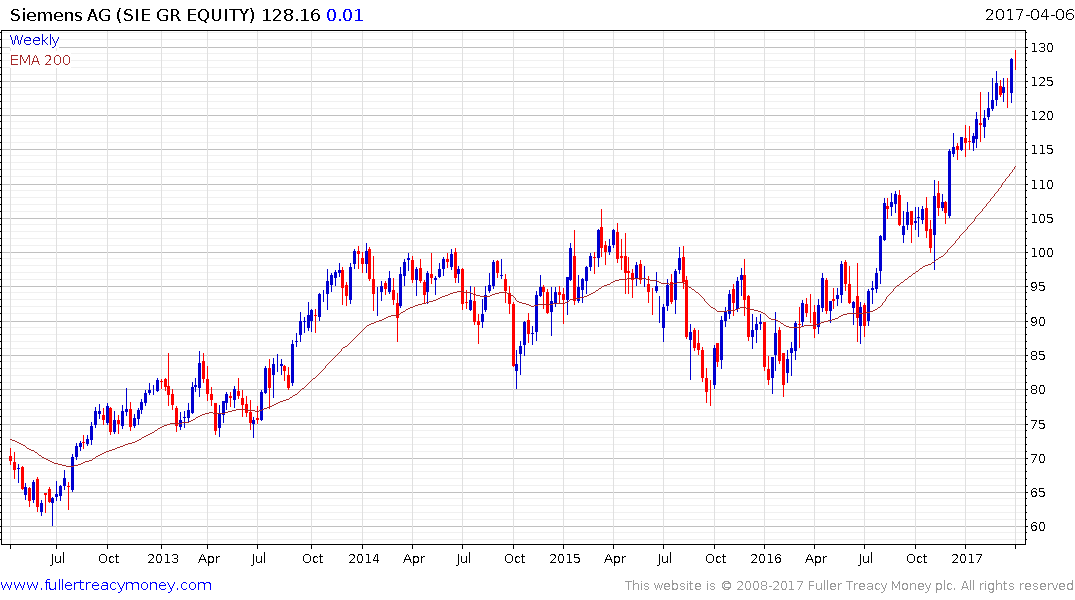
Siemens hit a new all-time in the last couple of weeks and while somewhat overextended relative to the trend mean at present, a clear and sustained move below it would be required to question medium-term upside potential.
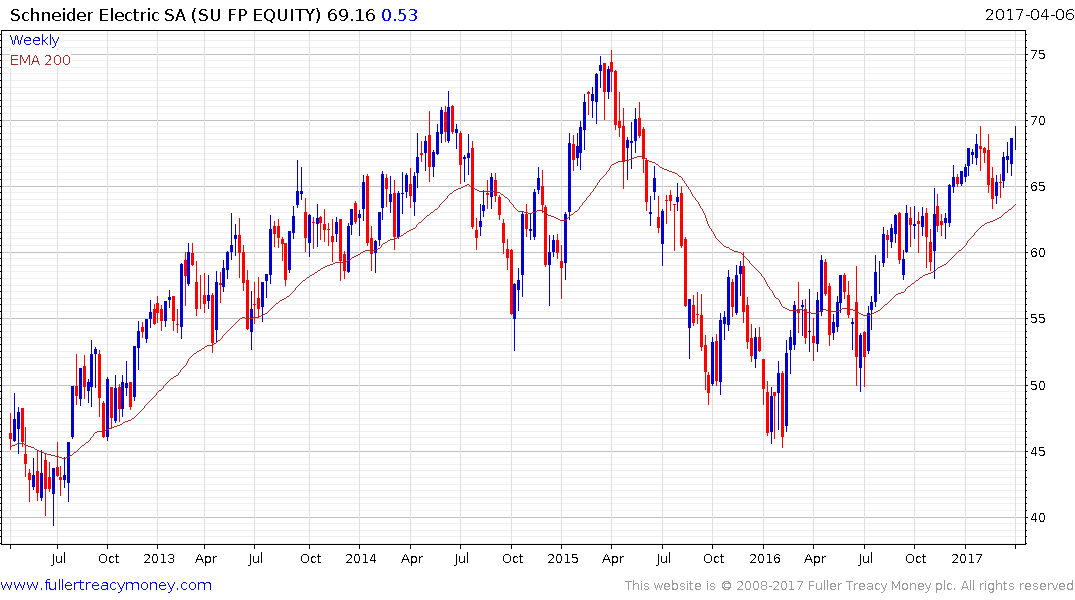
Schneider Electric hit a medium-term low in early 2016 and has held a progression of higher reaction lows since. A sustained move below €63 would be required to question the consistency of the advance.
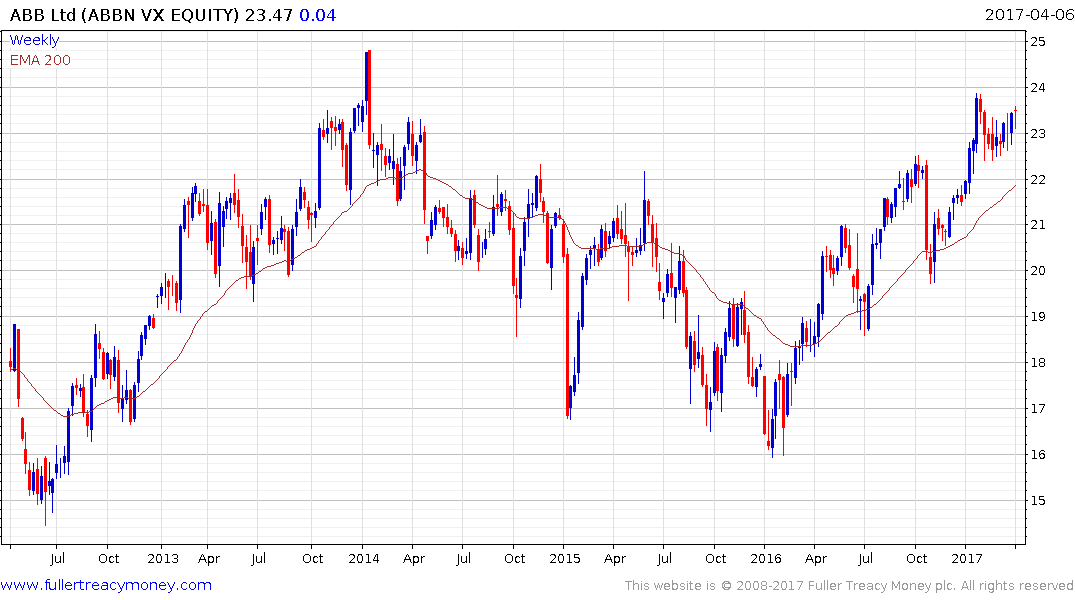
ABB has a similar pattern.
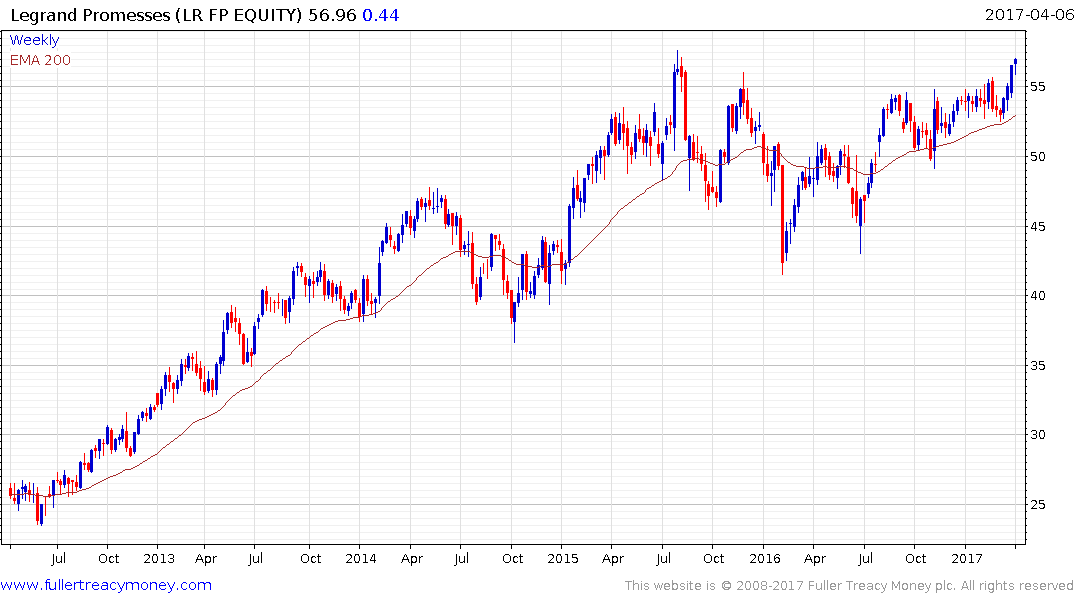
Legrand experienced a shallower pullback in 2015 and has rallied over the last year to retest the €55 area.
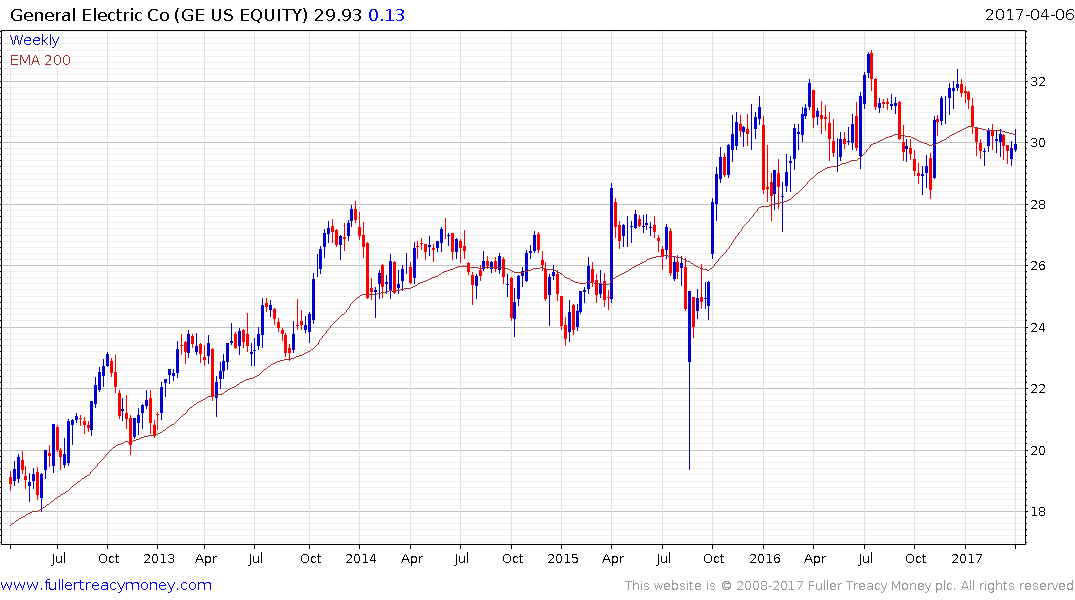
GE collapsed during the credit crisis as its finance arm imploded. The share has since held a progression of higher reaction lows and continues to trend higher in a steady manner.
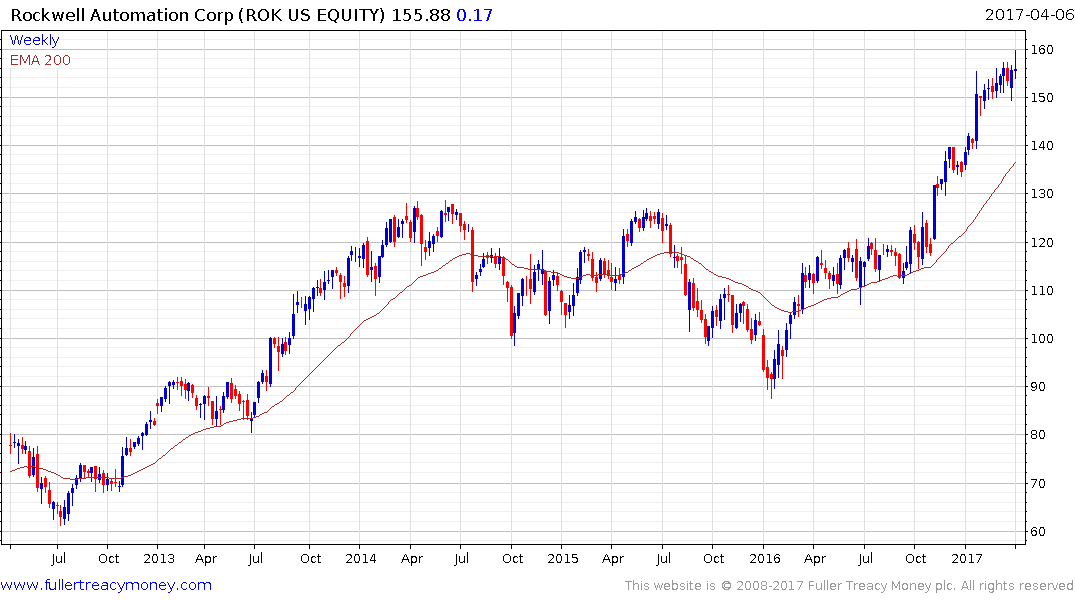
Rockwell Automation broke emphatically out of a two-year range in October and has surged to its recent peak. Some consolidation of this impressive gain is looking increasingly likely.
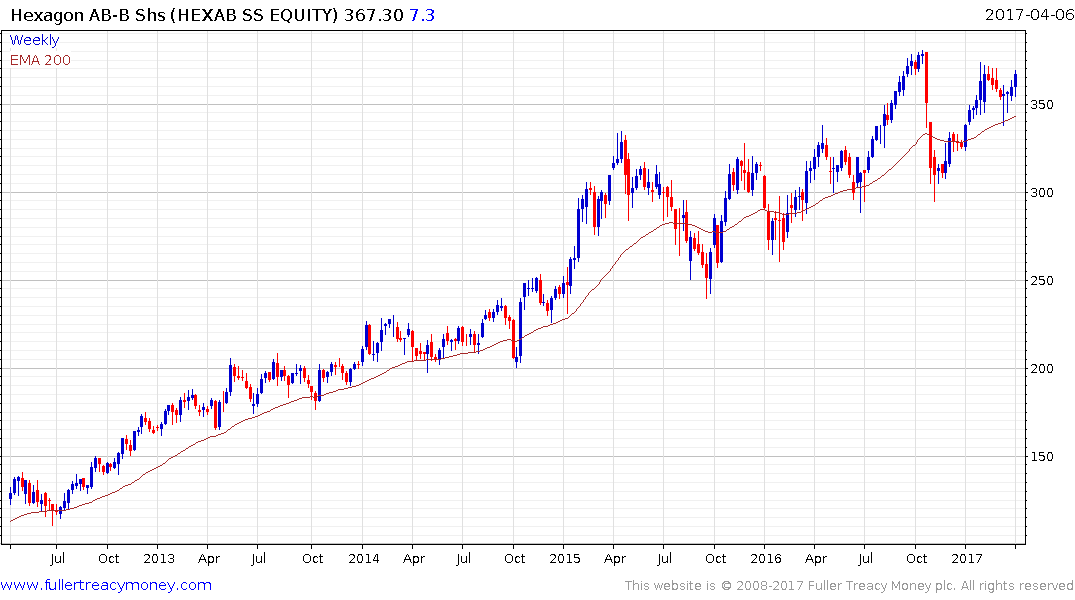
Hexagon AB pulled back sharply last October but held the medium-term progression of higher reaction lows and a sustained move below the SEK300 level would be required to question medium-term scope for continued higher to lateral ranging.


